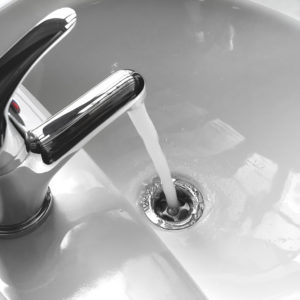A pair of major bills currently under negotiation by national leaders in Washington present historic opportunities for investments in America’s water infrastructure, from stormwater and sewage to programs that can ensure access to clean water for underserved communities.
First, the bipartisan Infrastructure Investment and Jobs Act would invest $550 billion over five years to improve our nation’s water systems, roads, bridges, railways, and broadband – including $55 billion for water infrastructure. While transportation infrastructure is commonly associated with efficient travel and commerce, water infrastructure is often out of sight and out of mind. Most people do not think too deeply about how they get water until they turn on a faucet and none comes out. Just imagine living through the early days of the COVID-19 crisis without being able to wash your hands.
Second, President Joe Biden’s Build Back Better Act also includes significant funding for water services, including one program that would provide targeted relief to low-income households — those most likely to struggle to maintain access. Just as the Low-Income Household Energy Assistance Program (LIHEAP) helps struggling families cover the cost of home heating and electric bills, this new program will allow water service providers to minimize disruptions, regardless of a family’s ability to pay. This low-income water assistance concept enjoys broad support, including from the U.S Chamber of Commerce.
America’s vital water systems and structures are aging, and in many cases, failing. Collapsed sewers, flooded roadways, destroyed homes, and raw sewage overflows from heavy rains caused by climate change are reminders of how much communities depend on the most basic public health and safety protection systems – wastewater, stormwater, and flood protection.
As a leader with the top national advocacy group representing public wastewater and stormwater agencies, I know these twin federal investments have the potential to be transformative. After years of underinvestment, they can not only bring our systems out of disrepair but also help build new, modern systems that will ensure resilience and economic vitality in our communities for decades to come.
For example, in Kentucky, the Louisville Metropolitan Sewer District will make $4.3 billion in necessary upgrades over 20 years to its aging infrastructure, some of which dates to the Civil War era. In Alexandria, Virginia, regional wastewater provider Alexandria Renew Enterprises (AlexRenew) is currently implementing an ambitious, $615 million environmental program. Similarly, Seattle Public Utilities is poised to invest at least $924 million over 20 years, including the $570 million Ship Canal Water Quality Project, to control pollutants and remove over 75 million gallons of pollution annually from its waterways.
In Cleveland, the Northeast Ohio Regional Sewer District will spend $1.5 billion in upgrades over five years to reduce sewer overflow and protect Lake Erie, a major freshwater resource, and faces additional costs to address legacy regional stormwater issues, such as flooding and erosion.
And in our nation’s capital, DC Water, which services the halls of Congress, will invest over $5.4 billion in infrastructure improvements over the next 10 years, including $2.7 billion to clean up the Anacostia and Potomac Rivers.
Without additional federal funding, the needed costs of investing in our nation’s water infrastructure will, unfortunately, fall on local residents in those communities, including some families who are already struggling to afford rising water and sewer rates.
The bottom line is the bipartisan infrastructure bill and the Build Back Better Act provide timely and critical opportunities to invest in our nation’s water infrastructure in a manner that will benefit all communities in red and blue states alike. At a time when our country is divided on many issues, clean water infrastructure and services are neither Democrat nor Republican.
We call on all members of Congress to finish the work on these critical legislative priorities and send them to Biden’s desk.

